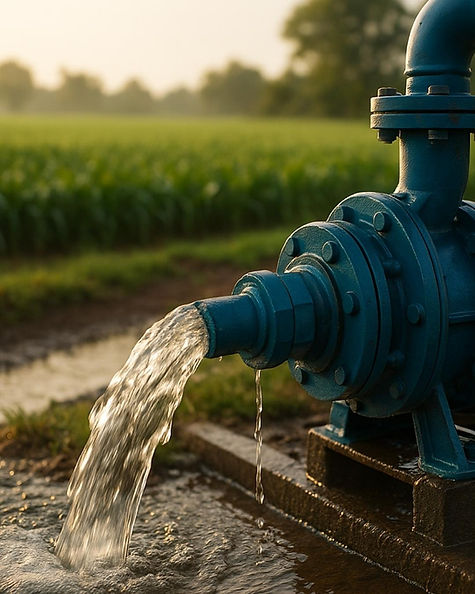
Rotary Pumps in Cape Town: Rotary Vane Pumps for Positive Displacement Pumping
Rotary pumps move a fixed volume with each cycle. A rotary pump uses internal parts to grab a volume of fluid and push it forward. These pumps deliver steady flow for oils, fuels, and chemicals. Rotary pumps are designed for clean service and reliable duty. The pump suits transfer, dosing, and circulation work in Cape Town plants.
What a Rotary Pump Is and Why This Pump Fits Your Process
A rotary pump is a type of positive displacement pump. The pump is usually compact and simple to service. The rotor and casing form a moving cavity that carries liquid from inlet to discharge. The rotating element traps a volume of fluid on the suction side. The parts then force the fluid to the discharge side of the pump. Pumps are commonly used for fuel oil, lube oil, crude oil, diesel, hydraulic oil, and gas-laden liquids. Pumps are used where centrifugal pumps cannot hold a fixed volume. This type of pump keeps flow steady at low speeds and at high viscosity. The design limits pulsation for smooth delivery.

Vane Pumps and Positive Displacement Benefits
Vane pumps provide constant transfer at stable differential. A sliding vane set rides inside the rotor slots. The vanes extend as they rotate and seal against the casing. Minimum clearance improves efficiency and reduces leakage. A shaft seal or mechanical seals protect the wet end. This positive-displacement pump holds rate across pressure swings. The pump can be self-priming on short lifts. It handles viscous fluids with ease. It also moves low viscosity fluids with the right clearances. Use this pump for pumping oil without shear damage.

Selecting a Positive Displacement Pump for Your Duty
Match the pump to your media and duty. Confirm viscosity and temperature first. Select materials for seals and bearings. Choose a gear pump for clean fuels with spur gears or a spur-gear pair. Pick a screw pump for quiet flow and low pulsation. Consider a gerotor pump where a rotor and an idler create smooth delivery. A stator ring can guide the orbit in some variants. Check the valve plan for relief on the discharge side. Add timing gears on intermeshing gear teeth where needed. Use a lube plan to lubricate the internals. Plan lubrication to extend service life. Include a shaft seal to manage vapor and gas in the stream. Verify the type of pump with our team before order.

Sizing, Flow, and Displacement in a Rotary Drive
Start with the required flow and discharge pressure. The volume of fluid per rev sets theoretical capacity. Displacement links speed to delivered flow. Pumps can be used at low-pressure or at high-pressure with the right build. Set pump types by liquid, temperature, and duty cycle. Allow for clearance loss at pressure. Set the inlet line short and straight. Keep the suction side flooded where possible. Control discharge pressure with an inline valve. The rotor rotates at low rpm for high-viscosity fluids. Use low viscosity for fast start on light service. Watch for vapor release at heat. Add filtration to protect the cavity and the pump shaft. Confirm that pumps are designed to operate within limits.

Vane Maintenance, Spares, and Service Support
Plan routine checks for shaft, seal, and bearings. Inspect the casing for wear paths. Replace vane tips at set hours. Check for leakage at joints and covers. Confirm wet end condition after long runs. Verify discharge side gaskets and fasteners. Review timing gears and driven gear wear on gear units. Set reliefs to protect the discharge side. Keep the rotating element clean and aligned. A primed system reduces downtime and protects pump performance. Our team supports parts, builds, and start-up across a wide range of Cape Town sites.
